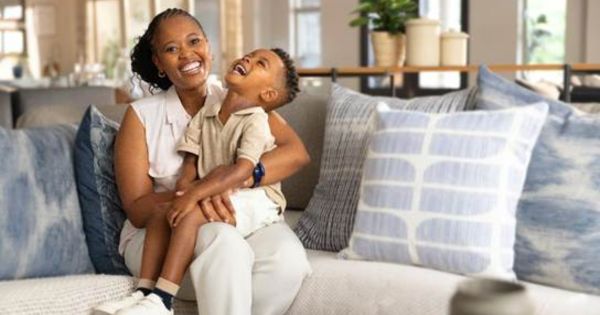As soon as your baby begins to crawl you may be surprised at just how fast they can get around. Their curiosity leads them to all sorts of places while they explore the world around them which is a huge milestone in their early life!
The unfortunate part of this is that accidental injuries can occur as your child is inclined to grab, push and pull things, to climb and explore as they experiment with and experience the furniture and objects around your home.
Even though it’s not always possible to prevent your baby from every bump and bang in the home, it’s certainly helpful to reduce the risk of more serious injuries. That’s why we’ve compiled a list of tips so that you can check them off as you make your home a safer place for an inquisitive child.

- Safety Gates
There are different types of safety gates available and they are normally the first thing that is thought of by parents whose babies are beginning to crawl around; the stairs, of course, being a major hazard in the household.
They’re not just for stairs though but also for barring your baby from entering the kitchen and other rooms which are potentially hazardous or that get too busy for a baby to be crawling around.
Most people use pressure locked safety gates for general purpose but a top tip is not to use a pressure mounted safety gated on the top of the stairs. It’s much more secure to use one which is mounted on the wall as this negates the risk of it coming loose if it is installed properly.
- Locking Lids
Very young children don’t know how to multitask and can easily let go of a lid their holding open resulting in it falling onto their heads. Toy chests, toilet seats, chest freezers and anything with a free falling lid should either have a lid that locks open or should be locked shut.
- Safety Latches
The chemical cupboard in the kitchen is a major concern for parents. Safety latches can be purchased in multipacks and in different varieties. Some are super easy to install and can either be stuck on or you can use magnets to attach them to the cupboard.
These should also be used if you keep medications and bathroom products in a lower cupboard in the bathroom. Items like mouth wash, toothpaste and any medical products should in no doubt be kept out of a child’s reach.
- Wall Brackets
Heavy, free standing furniture can be secured to the wall using wall brackets and this practice, although inconvenient, is highly recommended as the danger of them falling over onto your baby is a risk not worth taking.
You may not expect your child to be this mobile but once they learn to pull themselves up onto things, they will try to climb onto everything and this can be dangerous when it comes to furniture like book shelves or display cabinets.

- Outlet Caps
One of the main concerns for parents is electrical outlets. Outlet protectors are very inexpensive and often come in large packs. It’s very much worth putting these in all of the unused sockets in the rooms that the baby has access to in order to protect them from the danger of electricity.
This includes power strips and extension sockets too which should be hidden and out of reach but just in case, put some outlet covers in the empty sockets.
- Corner Covers
Covering the corners of furniture is not only great for when they’re very young, but also for when they’re older and often more energetic and sometimes reckless. They’re there to mitigate any damage that could occur from a head bump on a corner that could have otherwise caused serious injury.
- No Furniture near Windows
If you have any low tables, chairs or other seeming climbable pieces of furniture near windows, move them away. This includes taking necessary steps to ensure crib safety. This will ensure they have no way to climb up onto windowsills and so can’t climb or fall out of the window from there.
Even if you use window screens, they still may not be strong enough to prevent a fall and so it’s best to keep them from being able to get up onto there in the first place, just in case.
- Keeping Glass Away
This may seem obvious when it comes to drink ware, but what about things you haven’t thought of? Glass ornaments, photo frames, hand mirrors and any other objects made out of glass are a risk as the child can knock them down or drop them and if they shatter, there’s a high risk of your child being cut by the shards.
- Cordless Blinds
Something often overlooked by new parents is the blinds on your windows. The looped chords that they often have are a potential risk because the child could get their neck caught in it and so they are a potential choking hazard.
Avoid buying blinds with a looped chords or you could cut the loop altogether and tie the ends off and then add tassels to them to make them look nicer. It would be better altogether to replace your existing corded blinds for cordless ones.
- Exposed Batteries
Batteries are used in many kids’ toys as well as gadgets around the home but they are quite dangerous due to the risk of choking. Make sure battery compartments are always securely shut tight. Also check the remote control for the TV and if the battery cover is missing, secure it with some tape.
 Kaboutjie SA Mommy Blogs by Lynne Huysamen
Kaboutjie SA Mommy Blogs by Lynne Huysamen





Thanks for sharing very informative
Even at 2 years I am still proofing. Until what age will it stop. Lol I swear I didn’t know that having a child would mean protecting her from killing herself.
Oh I feel you Kamo, I felt like it would never end when my kids were at that age too! It does get easier though, I think from around 3 years old there was a big difference in how hard it was and from then onwards it gets easier all the time… but from age 2 until 3 it is rough as can be!
Agree as soon as baby becomes mobile whether it’s crawling etc baby proofing should start. Also as kids get older and grow taller and stronger, you might have to re- enforce those childproofing as they will eventually be able to reach or open. Better safe than sorry.
Yes they grow so fast and it is a process to keep everything safe!
Thank you. I swear it never ends I feel like I am stuck on repeat sometimes telling him don’t do that, stop, don’t run lol I still child proof things.